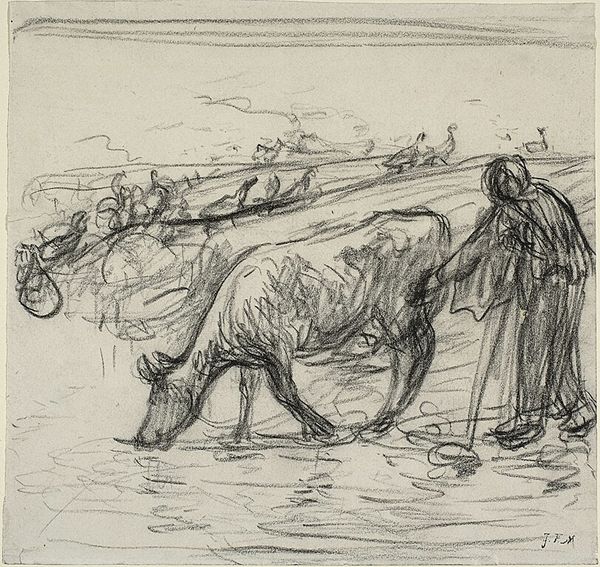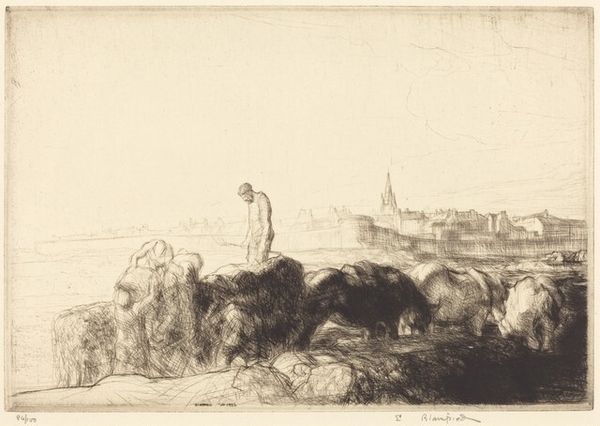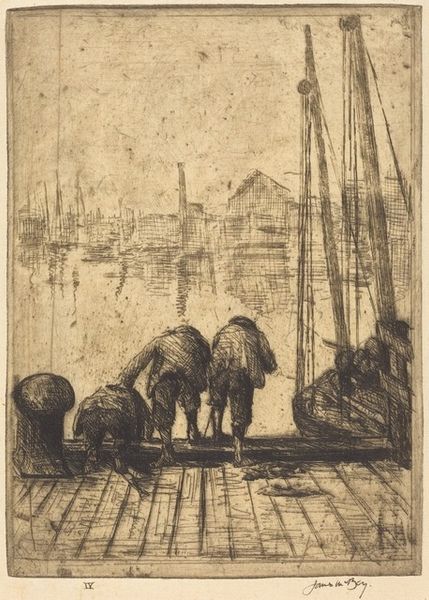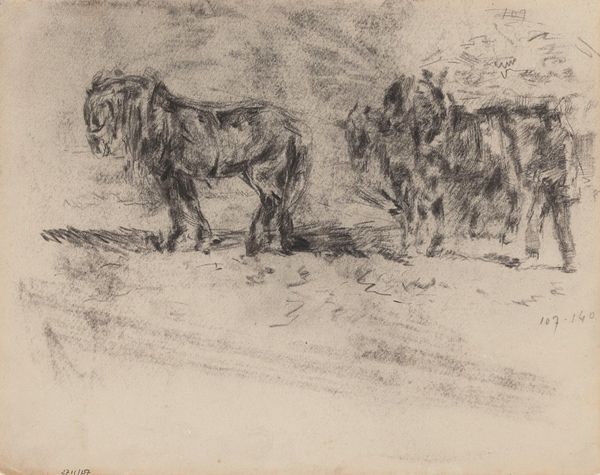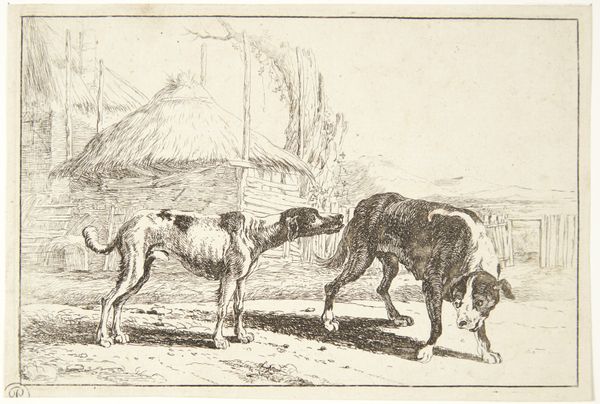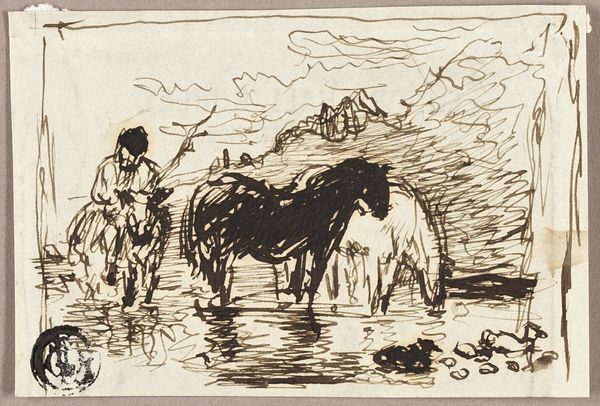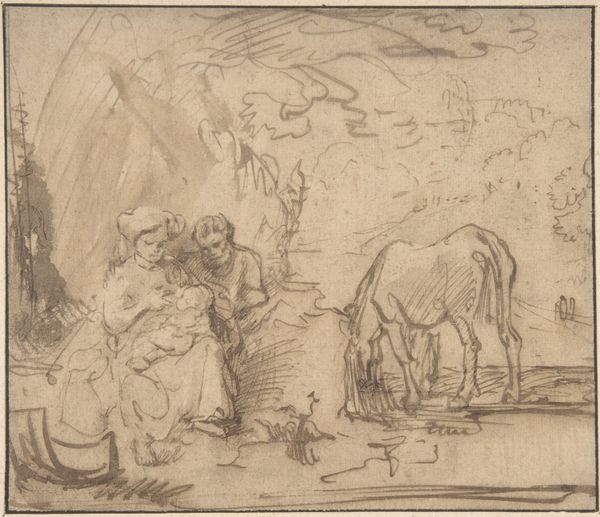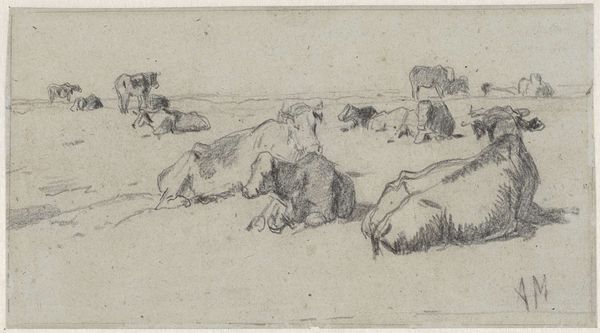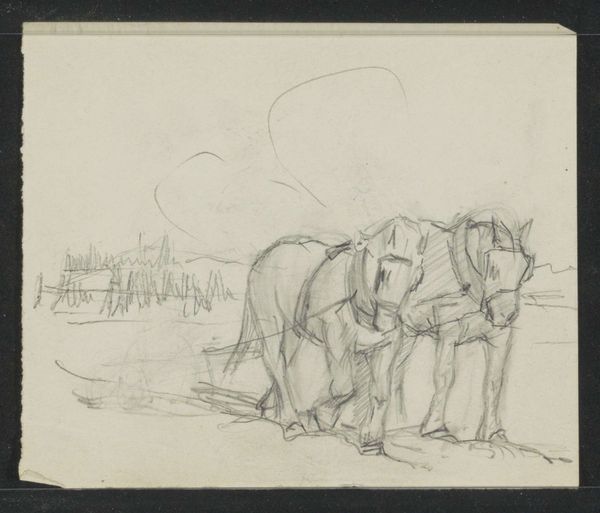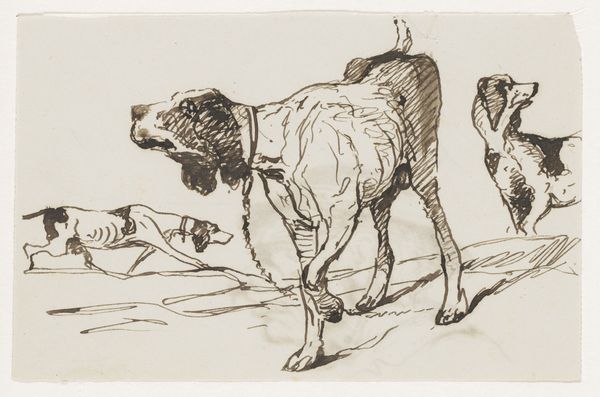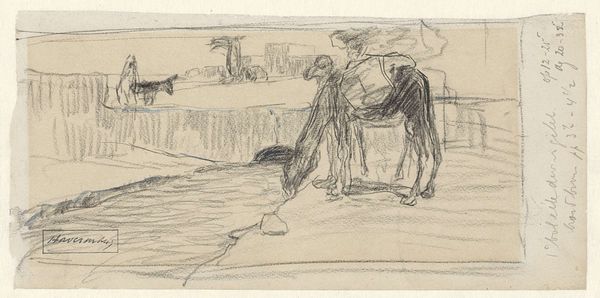
drawing, print, etching, engraving
#
drawing
# print
#
etching
#
landscape
#
figuration
#
pencil drawing
#
engraving
Copyright: National Gallery of Art: CC0 1.0
Curator: Welcome. Before us is Edmund Blampied's etching, "Ostend Horse," created in 1926. Editor: It’s bleak. Stark. I’m struck by the contrast between the solid darkness of the lead horse and the skeletal rendering of everything else. There’s a heavy sadness about it. Curator: That resonates with the realities of labor, particularly in coastal communities like Ostend during that period. Horses were integral to industry, bearing immense burdens, both physically and economically. Blampied was deeply interested in the impact of these forces on marginalized figures. Editor: I see the horse as a powerful symbol. A symbol of raw animal power, harnessed and subjugated to human will. The chain connecting horse and human forms a potent visual metaphor. But I also sense pride or respect in the animal itself? Curator: Absolutely. It speaks to the deeply entwined relationship between human and animal. Blampied's work consistently depicted rural life, exploring the intersection of human agency and the environment. One must remember that intersectionality wasn't a term used in the 1920's but those relationships between beings in different classes was part of life in both a class and post-colonial sense. Editor: There's an echo of other cultural traditions in how the horses seem to float above their drawn paths. I am fascinated by that tension. It is a dark subject but its symbolic representation opens a path into social memory. Curator: These visual echoes emphasize the enduring narratives of labor, the intersection of power, and the ways in which economic structures can impact both humans and animals, prompting us to think critically about contemporary labor practices as well. Editor: Thank you. Blampied’s creation allows one to think both on its dark terms and the lasting impact of such symbolism today.
Comments
No comments
Be the first to comment and join the conversation on the ultimate creative platform.
